One Specific Thing Dallas Can Do Better in Game 2
"Coaches *hate* this One Simple Trick"
Hurry go on ahead
Good things won't let you wait
***
Note: This piece be open for everyone to read. Given that I am asking you to revisit Game 1 at all, it feels only right to put this one on the house.
-RT
***
Today, we’re going to look at a bunch of plays and talk about hockey stuff. I say this in order to forestall your sarcastic answer to the above headline, which I’m sure was something like, “Oh, I know what they should do: SCORE MORE GOALS, DUMMY.”
Yes, you are hilarious. They should score more goals, and great news! Pete DeBoer teams are known for doing so. Because there’s something about a Pete DeBoer coached team that he’s been very clear about: he wants his team to have “a pressure identity.”
That’s worked really well for Dallas for three seasons and two (or more) deep playoff runs now (Game Ones excepted, as we all know). That identity has led to lots of goals scored, and the Stars have also managed to keep their goals allowed down to a very solid number in the past few seasons, including sixth-fewest in the NHL this year.
Obviously Casey DeSmith and Jake Oettinger deserve loads of credit for making those goals-against numbers prettier than they’d be with less excellent goaltending, but the point is, DeBoer’s Dallas Stars are not a team willing to trade chances in trying to win 6-4 every night. They do lots of things well, and that means players are sometimes free to do things in this system that they wouldn’t be in a more risk-averse system, as we’ve seen under prior coaching staffs.
But I don’t want to talk about an entire system today, thank goodness. I want to talk about one little part of that system, or maybe even just a little outgrowth of its aggressive philosophy, that manifested itself a few times on Saturday night.
Because one way that pressure identity shows up for DeBoer’s Stars teams is, I think, in how free all three of the Stars’ forechecking forwards are to go below the opposing goal line in efforts to win pucks.
Here’s an example of how they don’t mind sending multiple guys down low, and how it can work really well:
Here’s two forwards in Marchment and Duchene having just gone below the goal line to keep possession. Seguin is heading down to the side of the net as well, when Duchene wins the puck sends it across to Marchment on the weak side.
Marchment ignores the primed-and-ready Ilya Lyubushkin at the point and takes a shot himself, which gets blocked. But he collects the puck again and sends another shot in that somehow doesn’t beat Mackenzie Blackwood’s arm webbing or whatever.
What happened shortly after that is something we’ll talk about another time. Soon, in fact.
That Marchment shot is a great example of the Stars using aggresive puck pursuit to outnumber the defense down low and create a Grade-A scoring chance. It is also a great example of the vindictive nature of fate, as that chance obviously should have tied the game in a just universe. I’m sure you’re happy to think about that again, now. You are welcome!
Anyway, that willingness to have two or three forwards crashing below the goal line and even behind the net is pretty clearly a feature of their system (and many other teams’ systems), rather than a bug. But it comes with some risks, if things aren’t executed well. (And what doesn't?)
Those risks were on display pretty often last night, as we’ll see.
Here, two minutes into the game, the puck is in the corner, and you can see all three Stars forwards (two of them are next to each other there on the line) at or below the red line in hot pursuit of the puck.
The puck gets sent along, and fourth-line centerman Jack Drury ends up getting the puck in the neutral zone with a 1-on-2 rush (you can barely see Ceci’s stick behind Lindell below) that the Stars are prepared to defend. No big deal, right?
It’s not, for now. Drury gains the zone and sends a shot on goal from above the circle, and Oettinger easily blockers it into the corner, but crucially, not out of play. (Which I think Oettinger would like to have done.)
And the Stars can’t clear the zone as a result. The Avalanche end up winning the puck back and cycling it around for an open shot from Josh Manson, with bodies going to the net:
Oettinger stays tall and gets his chest on the Manson shot.
But that sends it down into a prime rebound area for Parker Kelly, and you probably remember this chance now, don’t you?
Oettinger saved it, much to his credit.
Eddie Olcyzk said on the TNT broadcast that Oettinger might have been able to glove the shot and kill it, rather than give up a rebound. But I'll leave that for the goalie wizards to argue.
The point here is that the Avs were allowed to come back down and gain the blue line for free after the Stars overpursued down low in the offensive zone and got beat cleanly, and it all ended in an easy zone entry and, eventually, a prime scoring chance for Colorado.
Of course, that came with a lot of other stuff in between, though—this example isn’t a 1-to-1 correlation by any means. Let’s keep going, though.
Midway through the game, we have the Duchene line out. Marchment has just taken a hit along the near boards to get a puck in behind the net, where Seguin tries to feed Duchene just above the goal line.
It doesn’t work, and the puck goes to the majority of the Avalanche team above the goal line, all of whom are more than happy to rush down the ice.
And that led to the back-door chance for Toews, which Oettinger actually got a shoulder on—another great save he made in this game—after which the puck went just wide:
All three Stars forwards from that line got trapped again later in the second. This is more of an honorable mention, however, as it led to an odd-man rush for Colorado, but not because of three forwards getting super-duper low.
Marchment had gone below the goal line as F1, with Seguin forcing the rim along the boards by guarding the circle. The puck went to where Duchene was poised to come down from the blue line and pick it off, with Esa Lindell right behind him mildly interfering with Artturi Lehkonen. But not enough, it turned out.
But I think Duchene got his stick lifted (by Lehkonen?) behind him, and the Avs grabbed the puck and went off on an odd-man rush again:
But this time, Cody Ceci heroically snuffed out a Nečas pass to MacKinnon to save everyone else’s bacon:
And guess what? We’re not done. You’ve seen this one before:
Once again, all three Stars forwards are caught low—this time, all three behind the net—and despite MacKinnon getting bludgeoned with Hintz’s stick, the Avs would have had another 4-on-2 rush here if they weren’t distracted by the bloodletting and litigation behind the play.
Dadonov actually beats a pretty gassed Makar back up the ice to even out the numbers, but it doesn’t matter, as referee Kelly Sutherland blew the play dead back down the ice.
(Note the linesman and everyone else turning around to look back down the ice, where the whistle came from.)
Of course, MacKinnon would score on the subsequent power play, so I’d argue the Stars did get burned by all three forwards crashing below the goal line, or at least by one of them not taking better care with his stick.
In the third period down two goals, the Stars had little choice but to be aggressive, so it’s little surprise you continued to see the same commitment in the offensive zone.
The Stars continued their overload down low or whatever term you prefer, though this one wasn’t really the forwards’ fault. The puck gets sent around to the far side where Harley is waiting to pick it off the boards, which he does.
Harley then grabs the puck and backs off with a quick move to the point in order to shoot, but he fans on it, and Brock Nelson pounces on the puck.
Nelson isn’t clean enough to lead the rush though, so although the 3-on-2 looks good to start…
…Roope Hintz (who was probably the Stars’ best forward all night) gets back down in time to almost cut off a cross-ice pass to Nichushkin. Except he doesn’t.
The pass gets through Hintz, and Nichushkin takes it to the middle and shoots from a dangerous spot with tons of traffic. But this time, Hintz does get a piece, blocking the puck into the netting.
And here’s one more example from the third period—again, where I don’t fault Dallas for being aggressive at all, given the time and score—where Girard lost the puck on a zone exit and the Stars pounced after Marchment poked the turnover in deep.
Here, you can see Duchene gliding down low by the net as the third forward while the pile fights for the puck in the corner.
Duchene does a quick shoulder check and sees Harley, so he knows if they can win the puck in the corner cleanly, there’s tons of space for him to set up Harley, who is also lurking a little lower in the zone (both to smother outs along the strong side and to potentially pinch down for a chance, should one develop).
It doesn’t, though, as I believe Erik Johnson pitchforks a backhand that deflects between everyone and all the way down to Oettinger.
The most obvious case of getting burned by that aggression would come on the next chance Toews got off a 4-on-2 rush in the third, however, when Rantanen lost an edge (or got knocked down), and the Avs got the puck up quick, with Josh Manson in the lower left winning the race down the ice.
This time, Toews didn’t miss, as Manson found him for a tap-in goal on the back door.
This is a lot of pictures to look at in order to illustrate one concrete point: Dallas needs to pressure precisely, and even if they don’t turn every puck over, they also need not to lose those battles cleanly to Colorado, either.
To be very, very clear: I am absolutely not advocating for keeping the “third guy high” as you might have seen more commonly in prior coaches’ systems. If it makes sense to send all three guys low to win the puck and create a quick scoring chance, that’s kind of the Pete DeBoer system, and the Stars certainly have the forwards to capitalize on it.
On Saturday night, however, they ended up making some big trouble for themselves without ever generating a 5-on-5 goal. And given that half of those rushes surrendered are likely to come with either (or both) of Makar or MacKinnon on the ice, the Stars will need to be a bit sharper in their execution when pressuring 200 feet away from their own net.
That might mean the third guy hovering a bit outside the pile. Other times, it might mean lurking down further along the end wall. And sometimes, it might genuinely mean living to fight another day, depending on the situation. But I’d expect to continue to see aggressive play, because that’s the nature of this team, and this coach.
Overall, Dallas defended Colorado really, really well (especially relative to the last month’s worth of games). And handing the opponennt easy transition plays and even easier scoring chances is the last thing they need to be doing when they’re doing so many other little things right.
(Also, they should score more goals.)









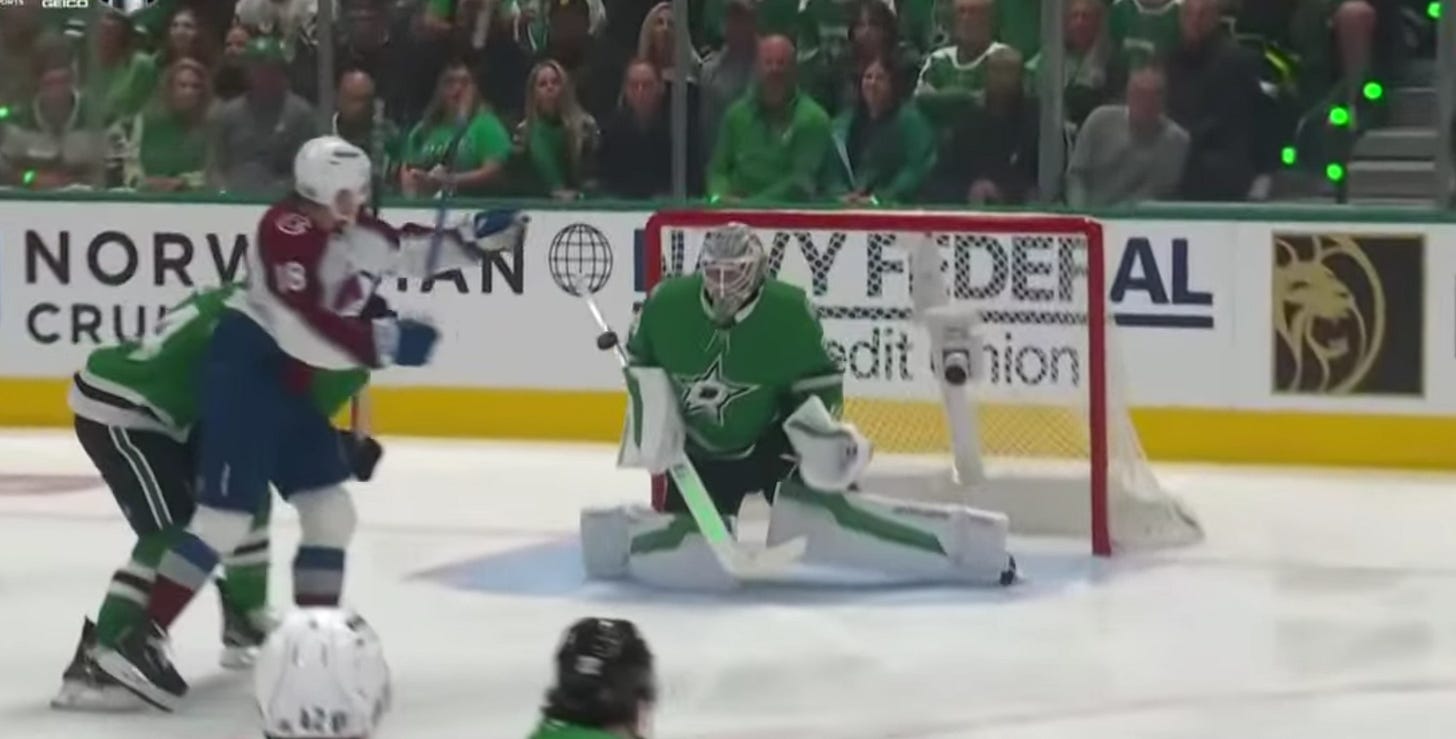
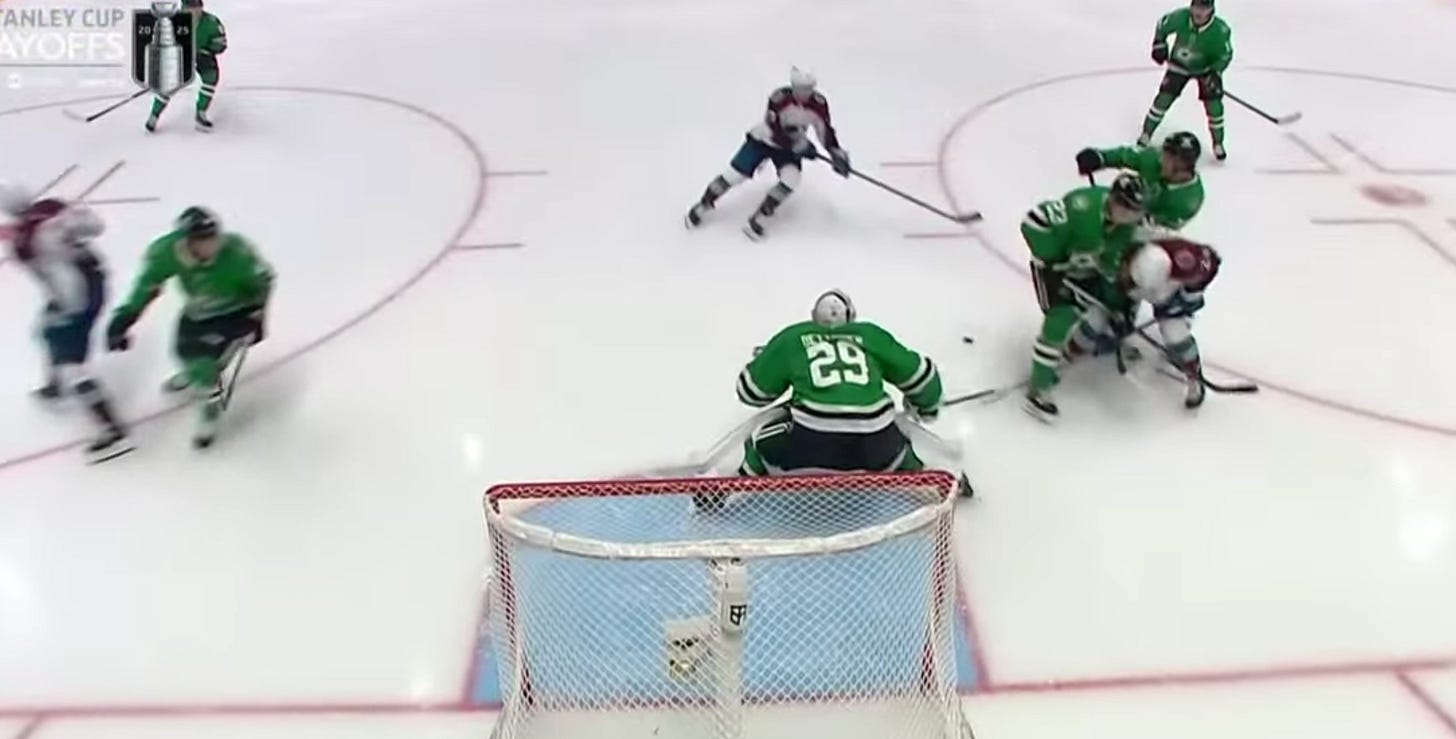
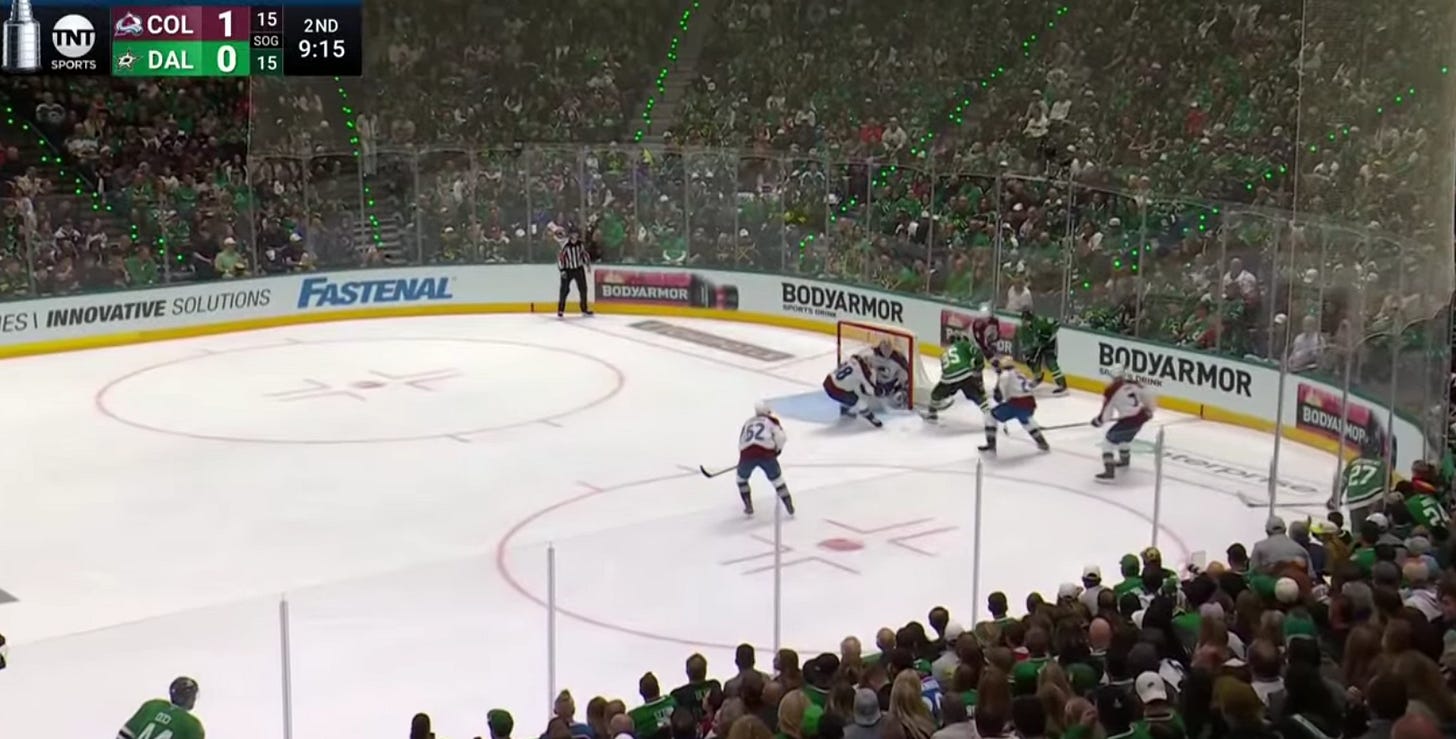









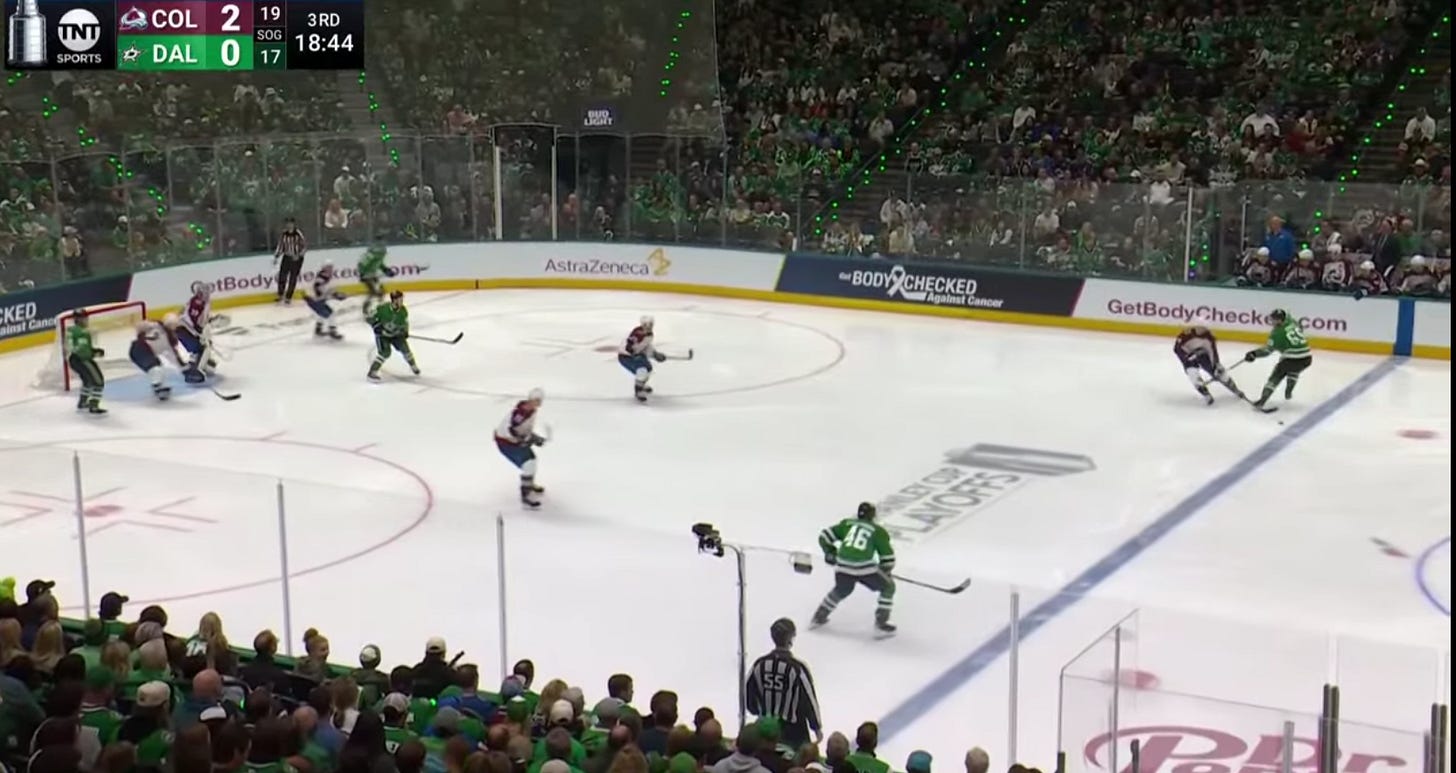

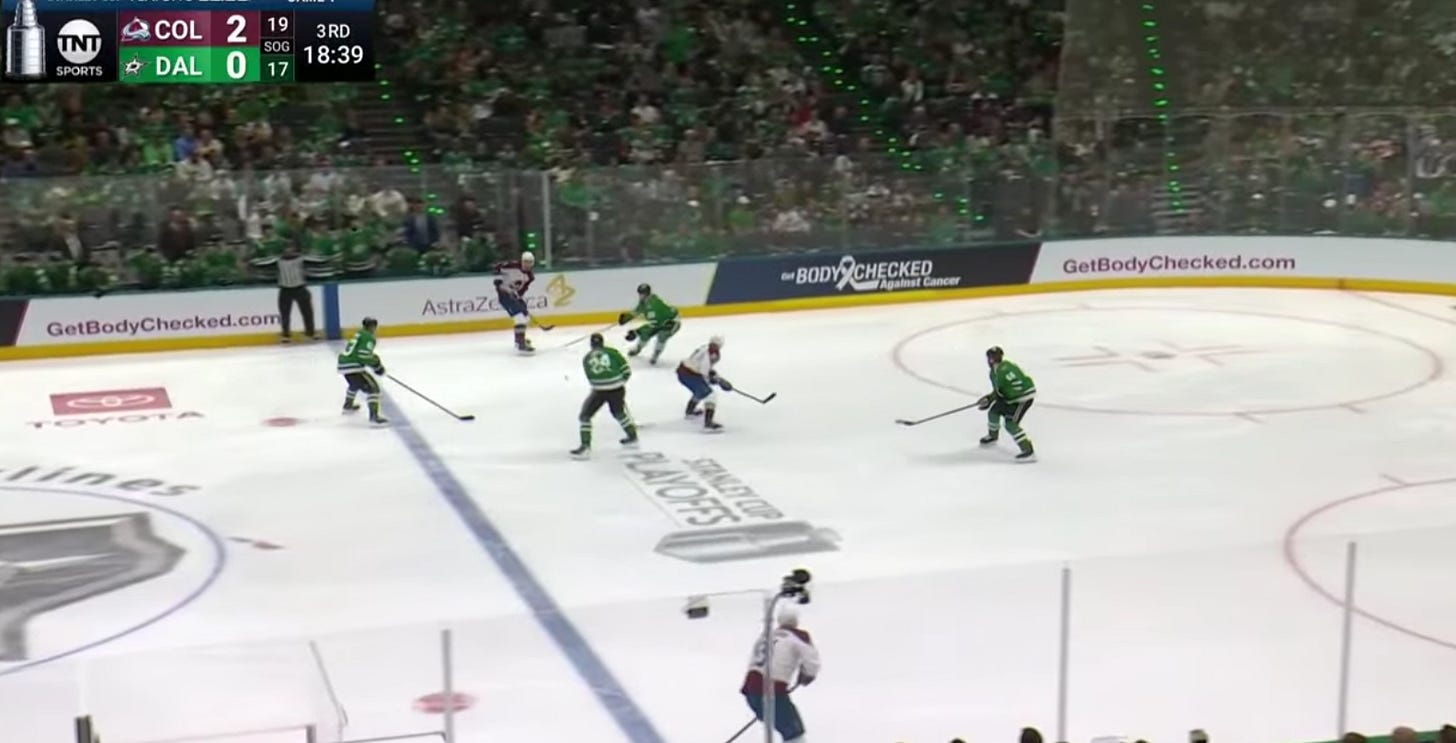
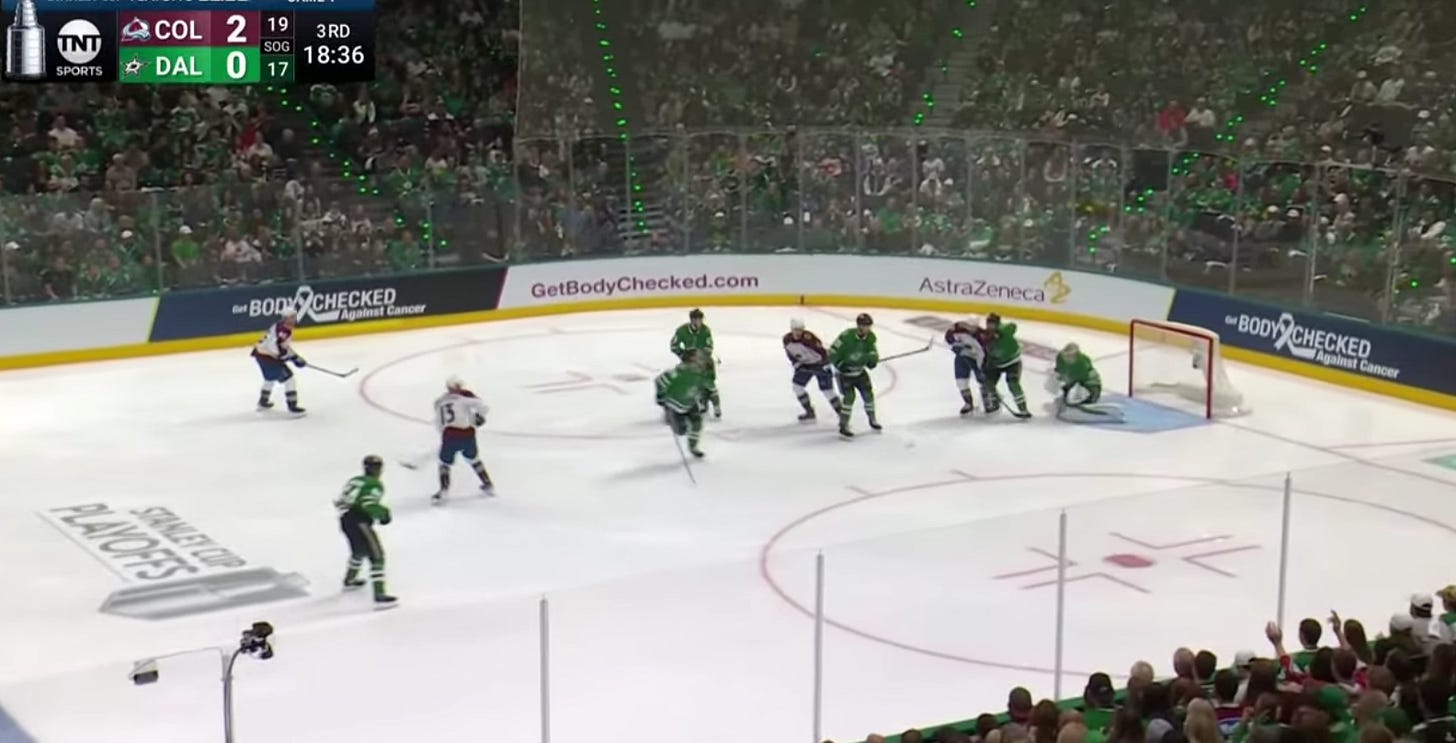




What I’m seeing is that the fans are right with the simplest solution. You discredited it and then said they should do it. Occam’s razor strikes again😉
This might be a great idea!
The NHL does a poor job of having league experts explaining coaching systems, compared to the NFL for example. From the Payton-casts, to the Grudin QB tests (no more victory Payton-cast wannabes -please!!!!).
It’s not like the other teams don’t know what they’re doing, so it’s only a secret from us :))). Some of Spotts YouTube’s have some of the teaching systems vibes…